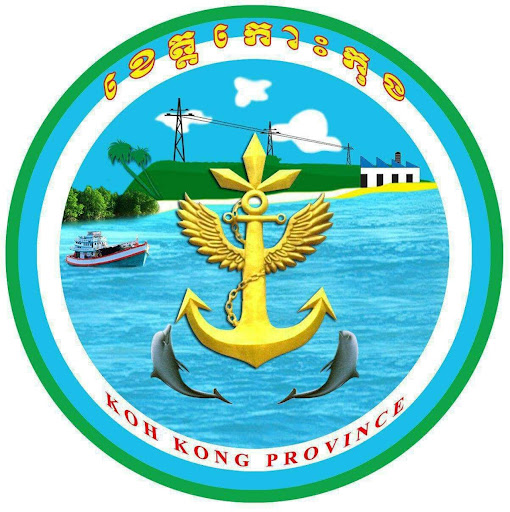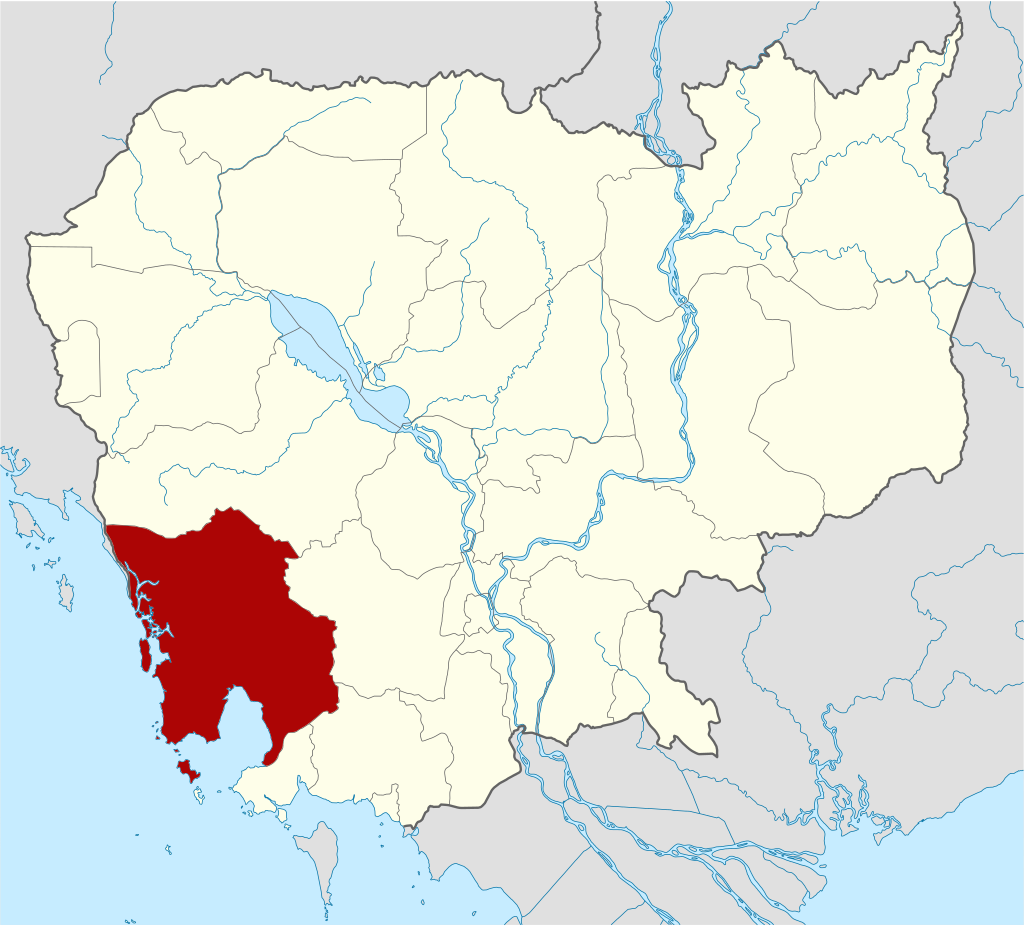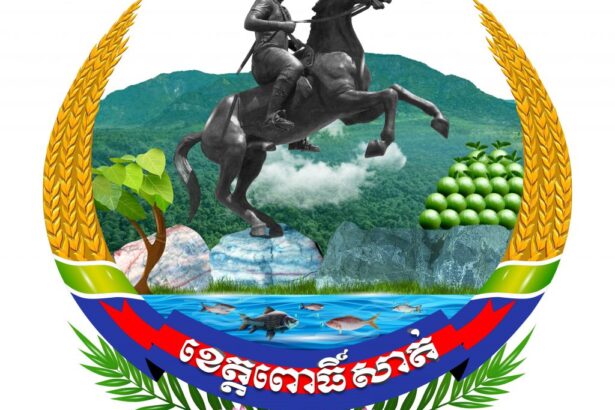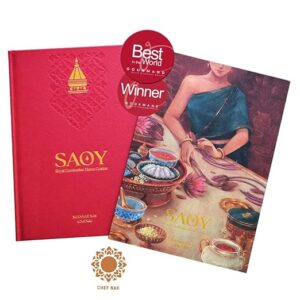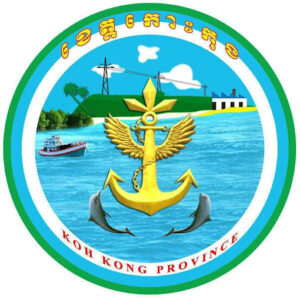
Koh Kong is one of the southwest provinces of Cambodia which is 290 kilometers from Phnom Penh along National Road 4 and 48. Koh Kong, covering 10,045.58 square kilometers, is one of the coastal provinces of Cambodia. Koh Kong is bordered by provinces of Pursat to the north, Kampong Speu to the east, Preah Sihanouk and Kampot to the southwest, the Gulf of Thailand to the west, Thailand to the northwest. Its coastal position provides access to the sea, making it an important area for marine and coastal activities.
Koh Kong is divided into 7 administrative districts and 1 municipality, called Khemarak Phumint City. The province has one international border gates, called Cham Yeam checkpoint and three seaport checkpoints such as Bak Khlorng, Thmor Sor, and Koh Sdach. With over 1300,000 people, the province is Cambodia’s sixth largest area and twenty-Second populous.
History
Koh Kong is a province located in southwestern Cambodia, known for its rich history and diverse natural landscapes. Here’s an overview of its historical background:
Pre-History or Early History Period
The area now known as Koh Kong has been inhabited for centuries, with its early history intertwined with the larger history of the Khmer Empire and neighboring regions. Its strategic coastal location made it an important area for trade and interaction with other Southeast Asian cultures.
Post-Angkor Period
In remote, natural rock ledges, scattered around the Cardamom mountains are 15th – 17th century sites with 60cm exotic ceramic jars and rough-hewn log coffins. The area of ancient jars and coffins that embed the beliefs and customs of the ancient Chung people is located in Choam Sla village, Chi Phat commune, Thmar Bang district, Koh Kong province. Mystery This place is believed to be an ancient burial place 500 years ago. The jar burials are a unique feature of the mountain, and a previously unrecorded burial practice in Khmer cultural history. Local legends suggest the bones are the remains of Cambodian royalty.
Colonial Period
During the 19th century, Cambodia became a protectorate of France. Koh Kong, due to its proximity to Thailand (then Siam), was a point of contention between French colonial authorities and the Siamese kingdom. On 13 February 1904, Koh Kong was officially ceded to France as part of a treaty, becoming part of French Indochina. In the 1910s, Koh Kong Island was deserted, covered with forest and separated from the mainland by a channel of hundreds of meters. At the northern point, near the small island called Cône, was a custom house. A few Chinese and Vietnamese settled on the coast and fished. The port of Koh Kong was not open for commerce, but a steamship postal service between Saigon (now Ho Chi Minh City) and Bangkok existed. Siamese commercial ships also visited “Kas-Kong” to buy dried fish and Kapik. During the reign of King Sisowath Monivong (1927-1941), Koh Kong province was a district under Kampot province, where the governor of Koh Kong district had the title of Pichey Roeung Rith “ពិជ័យរឿងឫទ្ធិ”.
Independence and Conflict Period
Koh Kong Province during the Sangkum Reastr Niyum era of the reign of King Samdech Preah Norodom Suramarit by Royal Code No. 246 N.S. Dated January 13, 1958, cut off from Kampot province and located in a place called “Cham Yeam” in Koh Por commune covers an area of 606.64 hectares and has two districts at that time, Kampong Som and Koh Kong. Later, Koh Kong province was transformed into a province called Koh Kong province, located in Bang Chak village in Peam Krasop commune by Royal Kram No. 332-N.S. Dated August 13, 1959, during the reign of King Norodom Suramarit.
During the Cambodian Civil War and the subsequent Khmer Rouge regime (1975-1979), the province, like much of Cambodia, experienced significant turmoil and hardship. Until the late 1990s, lack of access made Koh Kong one of the most remote and least secure parts of Cambodia. Khmer Rouge in the lower Cardamoms posed a serious threat to locals and travelers and intermittent fighting between the government and Democratic Kampuchea forces continued until 1998. Throughout the 20th century, Koh Kong remained relatively isolated, with dense jungles and limited infrastructure.
Modern Day
Isolation in the past also made Koh Kong a center for wildlife smuggling and sale for restaurants and local consumption. In 2000s, Thailand wildlife traders reportedly came to Koh Kong town each month to buy wildlife products. Moreover, Koh Kong township and the area nearby was also the center of widespread illegal logging of broad leaf deciduous forests in the Cardamoms. According to environmental agencies, the government logging ban in 2001 has slowed but not prevented the illegal logging trade. In 2005, Yor Ngun (an infamous tiger hunter) was captured in Koh Kong town and charged with having killed and sold at least 19 tigers, 40 leopards, 30 elephants, 500 gaur, banteng and sambar, 40 Malayan sun bears and three Asiatic bears. At the time of his arrest, he had 25 bear jaws and 82 bear nails in his possession. He was sentenced to seven years in jail. The construction of the Thai-Cambodian bridge (completed in 2002) across the Koh Pao River and upgrading of the national highway meant that Koh Kong was open to industry, investment and tourism. The province has since seen economic growth, particularly in tourism, due to its natural attractions like the Cardamom Mountains, pristine beaches, and the Koh Kong Conservation Corridor. These efforts have been made to balance development with environmental conservation, given the region’s ecological significance.
Dignitaries who were former governors of Koh Kong since 1959
There were 13 Governors of Koh Kong Province from 1959-Present, including:
- Major Sok Cheab (វរៈសេនីយត្រី សុខ ជៀប) 1959-1961
- Captain Sek Sam Ieat (អនុសេនីយឯក សេក សំអៀត) 1961-1968
- Major Young Yok Hang (វរៈសេនីយត្រី យង់ យុក ហង់) 1968-1970
- Mr. Moul Heang (លោក មូល ហ៊ាង) 1970-1972
- Brigadier General Sei Oeung (ឧត្តមសេនីយត្រី សី អ៊ឹង) 1972-1974
- Colonel Cheng Kem Noun (វរៈសេនីយឯក ចេង គឹមនួន) 1974-1979
- H.E. Rung Phlarm Kesorn (ឯកឧត្តម រុង ផ្លាមកេសន) served as Provincial Party Secretary and
- H.E. Mun Siri (ឯកឧត្តម មុន សិរិ) served as Provincial Party Under-Secretary from 1979-1992
- H.E. Rung Phlarm Kesorn (ឯកឧត្តម រុង ផ្លាមកេសន) 1992-1998
- H.E. Yuth Phou Thorng (ឯកឧត្តម យុទ្ធ ភូថង) 1998-2009
- H.E. Bun Lert (ឯកឧត្តម ប៊ុន លើត) 2009-2017
- Lok Chumteav Mithuna Phou Thorng (លោកជំទាវ មិថុនា ភូថង) 2017-2025
- Lok Chumteav Chy Va (លោកជំទាវ ឈី វ៉ា) 2025-Present
Geography
Koh Kong is a province located in the southwestern part of Cambodia, and it features diverse and significant geographical elements:
Topography: The province’s topography is varied, with coastal plains of 237 kilometers, rolling hills, and mountainous areas. It is homed to the 23 islands and 12 inland islands. The Cardamom Mountains, which run through Koh Kong, are one of the most prominent features. These mountains are among Southeast Asia’s largest rainforests and are known for their rich biodiversity. This area is homed to waterfall, rainforests, wildlife, historic cultural sites. Coastal plains, stretching from Cham Yeam checkpoint till the provincial border of Keo Phos commune of Preah Sihanouk province, where enrich of beaches, dolphins, mangrove forest. Archipelago area is homed to coral reefs, seagrass, biodiversity along the stream and Ramsa area. For instance, Koh Kong Island is one of the largest islands in Cambodia. These islands are known for their beautiful beaches, coral reefs, and tourism potential.
Water Bodies: The province has several important rivers such as Koh Pao River, Tatai River, Tror Paing Roung River, Andaung Toek River, and Sre Ambil River. These waterways are vital for transportation, irrigation, and local livelihoods. Koh Kong also features extensive mangrove forests along its coastline and riverbanks, which are crucial for maintaining coastal ecosystems and protecting against erosion.
Climate: The province has a tropical monsoon climate, characterized by a wet season (May to October) and a dry season (November to April). Heavy rainfall during the wet season supports the lush vegetation and diverse ecosystems in the region.
Natural Resources, Vegetation and Land Use: Koh Kong is rich in natural resources, including forests, wildlife, and marine resources. The Cardamom Mountains are home to many endangered species and play a critical role in regional biodiversity. The province also has significant mineral resources and potential for hydroelectric power development due to its abundant water sources. Given its ecological significance, several conservation areas and wildlife sanctuaries have been established in Koh Kong, including the Peam Krasop Wildlife Sanctuary and parts of the Cardamom Protected Forest.
- Koh Kapi Ramsar covered land area of 14,029 hectares.
- The Padum Sagar National Park covered land area of 143,895 hectares, located in Koh Kong province.
- The Koh Rong Marine National Park covered land area of 52,448 hectares (land area of 5,311 hectares and water bodies area of 47,137 hectares), sharing Preah Sihanouk and Koh Kong.
- The Phnom Kravanh National Park covered land area of 926,123 hectares, sharing with Koh Kong, Pursat, Kampong Speu, Preah Sihanouk, and Battambang.
- The Phnom Samkos Wildlife Sanctuary covered land area of 362,385 hectares, sharing with Koh Kong, Pursat, and Battambang.
- The Peam Krasaob Wildlife Sanctuary covered land area of 16,982 hectares.
- The Tatai Wildlife Sanctuary covered land area of 144,539 hectares.
- Dang Peng Multiple Use Area covered land area of 38,628 hectares.
Administrative divisions
As of 2024, the province is divided into 1 municipality (Krong) and 06 districts (Srok), 03 Sangkat and 26 communes (Khum), and 119 villages. Based on population census of 2019, the total population is 136,675 people (female 67,846), the number of households is 29,894 households, and the density is 14 people/km2. Khemara Phumin municipality is the seat of government, commonly known Krong Khemara Phumin or Khemara Phumin City.
- Khemara Phumin Municipality (03 Sangkat)
- Botum Sakor District (04 Khum)
- Kiri Sakor District (03 Khum)
- Koh Kong District (04 Khum)
- Mondol Seima District (03 Khum)
- Sre Ambel District (06 Khum)
- Thmor Baing District (06 Khum)
The provincial symbol is decaled by Ministry of Interior via a Prakas No.4753 BrK dated 14 August 2018 on the Establishment of Koh Kong Province Symbol. The symbol has shape and image as follow:
- The rounded shape
- The outer green circle represents the province’s forest resources.
- The light blue circle or sky-blue color represents the water resources of the province.
- The mountain image represents the islands and mineral resources of the province.
- The image of Light Pole represents the province’s hydropower source.
- The Seascape image represents the resources in the marine area, the seabed and under seabed.
- The anchor image represents the three levels of administration (province / city-district / commune-sangkat), waterway, port and airway.
- The Fish image represents marine fisheries resources.
- The image of boat represents the majority of people engaged in fishing.
- The Mangrove Forest image represents natural resources, ecotourism and biodiversity.
- The Factory image represents an industrial area in the province.
Accessibility
- Road: The main road through Kampot is National Road 4, which starts in Phnom Penh, and continue with National Road 48, at Sre Ambil.
- Waterway: there are two seaports such as Sre Ambil Seaport and Dang Tung Seaport.
- Airway: Koh Kong has two airports: Domestic airport called Koh Kong Airport (3C) is capable of handling aircraft types (ATR72, AN24, Y12 and Y7) and capable of receiving 120,000 passenger/year. It is currently no operation. Dara Sakor International Airport (4E) is capable of handling aircraft types (Boeing 777, Airbus A340).
Tourism Product
Koh Kong is a burgeoning tourism destination in Cambodia, known for its natural beauty and diverse attractions. Here are some of the key tourism resources in the province:
Cardamom Mountains (ភ្នំក្រវ៉ាញ): One of Southeast Asia’s largest rainforests, offering opportunities for trekking, wildlife spotting, and eco-tours.
Phnom Samkosh Wildlife Sanctuary (ដែនជម្រកសត្វព្រៃភ្នំសំកុស) is a conservation area in Koh Kong Province near the border with Thailand. It covers about 362,385 hectares, including 3 mountains in Cambodia such as Samkos Mountain (1,717m), Kmoch Mountain (1,496m) and Tumpor Mountain (1,250m). This is one of the best sites for adventure and ecotourism.
Koh Kong Krao Island (កោះកោះកុងក្រៅ) The largest island in Cambodia, known for its pristine beaches, clear waters, and coral reefs. It’s a popular spot for snorkeling, diving, and beach activities. This island is 22 km long and 7 km wide. There are many beautiful small mountains, 10 waterfalls, and 6 beaches with plenty of biodiversity and a lot of different kinds of animals. It has total area of about 105 square kilometers.
King Island or Koh Sdach (កោះស្តេច) is a natural island that has beautiful white soft sandy beaches and also provides a fresh and comfortable place to relax, due to its beautiful landscape and impressive view. Visitors can enjoy sea sport activities together with a beautiful sunset view. It has total area of about 1.1 square kilometers, located in Koh Sdach village and commune of Kiri Sakor district.
Koh Ampil Thom Island (កោះអំពិលធំ) has a total area of about 34.4 hectares, with a beautiful beach surrounded by the forest, fresh air, and a wonderful landscape. It is situated in Koh Sdach village, Koh Sdach commune, Kiri Sakor district, Koh Kong province.
Koh Ampil Touch Island (កោះអំពិលតូច) is an island covering an area of 11.2 hectares. This island is rich in nature and covered in thick forest, boasting fresh air and a wonderful landscape. It is situated in Koh Sdach village, Koh Sdach commune, Kiri Sakor district, Koh Kong province.
Koh Loy (កោះលយ) is a natural site located in Koh Kong Province along Kravanh mountain range. It is surrounded by a beautiful landscape as well as wildflowers and herbs. There is a hidden, cold waterfall in the forest that people can enjoy swimming in before taking a boat to watch fireflies at night after dinner. It covered land area of 13.5 hectares, located Pak Khlang commune, Mondol Seima district, Koh Kong province.
Koh Moul (កោះមូល) is one of the biggest islands in Cambodia, and it has a beautiful white sand beach, sitting in the middle of clear, deep blue water. In this area there are many hills surrounded. It covered land area of 18.6 hectares, situated in Kiri Sakor district, Koh Kong province.
Koh Smach (កោះស្មាច់) is a beautiful and isolated island, and its remoteness and few inhabitants keep the island in pristine condition. Key features of this island include a green forest landscape and deep blue sea water. It covered land area of 1.1 square kilometers, situated in Kiri Sakor district, Koh Kong province.
Koh Sralau Island (ស្រឡៅ) is an island located in the sea border of Koh Kong province that has a beautiful mangrove forest, a green landscape, and wonderful view of the seafront. It has total area of about 3.4 square kilometers, located in Kaoh Sralau village, Kaoh Kapi commune, Kaoh Kong district, Koh Kong province.
Koh Ta Team (កោះតាទាម) is a small island which has a total area is about 0.6 square kilometers. It has beautiful nature, clear blue sea water and fresh air.
Koh Totung (កោះទទឹង) is a small island which is 0.8 square kilometers and near to Koh Chan and Koh Sdach. This island has a very beautiful natural landscape that attracts tourists to visit there.
Koh Gondol or Rat Island or Koh Nou (កោះកណ្តុរ) is a natural island that allows tourists to relax and enjoy refreshing scenes with a cool sea breeze during their holiday or vacation. Visitors can also enjoy swimming and seeing the beautiful natural scenery of the blue sea. It has total area of 2.4 hectares.
Tatai Waterfall (ទឹកធ្លាក់តាតៃ) A picturesque waterfall located near the Tatai River, ideal for swimming and picnicking. It is a natural destination that attracts tourists from around the world to visit Koh Kong. The waterfall view, the sound of birds and lush mangrove forests with fresh air help to release the tourists’ stress. There are two tiers of the Tatai Waterfall, with the first tier 5-6 meters in height and the second tier 12-15 meters high. It is located Anlong Vak village, Ta Tai Kraom commune, Kaoh Kong district, Koh Kong province.
Ta Chart Waterfall (ទឹកធ្លាក់តាឆាត) is a popular tourist spot for local tourists from other provinces because this area has a perfect stream with enough water for swimming. Additionally, around the waterfall, there is a dense forest that provides a relaxed atmosphere along with fresh air for any holiday. It is located in Ta Chat village, Tuol Kokir commune, Mondol Seima district, Koh Kong province
Padum Sagar National Park (ឧទ្យានជាតិបុទុមសាគរ): A vast park with diverse wildlife, including Asian elephants, fishing cats, pangolins, slow loris, sun bears, hog badgers, hod deer, gibbons, and various bird species. The coastal part of the park has a wide stretch of sandy beaches and it is rich in dense mangrove forests. It offers jungle trekking and wildlife watching.
Peam Krasop Wildlife Sanctuary (ដែនជម្រកសត្វព្រៃពាមក្រសោប): Known for its mangrove forests, it provides opportunities for boat tours, bird watching, and exploring the unique mangrove ecosystem. There are also a swinging bridge and high tower where visitors can look out over beautiful scenery, as well as wooden trails that lead into the mangrove forest. This glorious mangrove forest conservation area covering an area of 16,982 hectares. Peam Krasoap community is one of the most attractive natural sites in Koh Kong. The environment is home to many different species of animals, there is a shelter of both birds and fishes, and in the mangrove forest, there is an ancient well that offers clean water for the villagers all year round. The sea dolphins always navigate from Peam Krasoap to Trat province of Thailand. In addition, there is a 17-meter highs tower for tourists to climb and get a view of the mangrove forests as well as the sea.
Chi Phat Community Based Ecotourism Site (សហគមន៍អេកូទេសចរណ៍ធម្មជាតិជីផាត់): A natural attraction for tourists who love adventure (guided treks, mountain biking, and river trips), exploring archaeology tradition, cultures and wildlifes. It’s a model for sustainable tourism in the region. It is located in Chi Phat village, Chi Phat commune, Thmor Baing district.
Khun Chhang Stupa (ចេតិយឃុនឆាង) is a historical and cultural attraction site located on a stone in the middle of the seafront at Khemara Phoumin town. The stupa stands on a rock that is 20 meters x 10 meters, and the sand gasket of the stupa is about 3 meters. The stupa’s shape is round from the bottom and there are carvings around the stupa, which is itself 5 meters high and made of brick.
Koh Andet Eco Resort (រមណីយដ្ឋានកោះអណ្តែត) is a resort located on the Tatai Riverbank, close to Kra Vanh mountain ranges. There are bungalows above the water accompanied by greenery and fresh air. The bungalows are quite luxurious.
Morech Kangkeb Mountain (ភ្នំម្រេចកង្កែប) is known as Areng’s paradise and is an adventurous site with a beautiful mountainous landscape where tourists can relax with the calm atmosphere and breathe fresh air. In addition, tourists can enjoy watching hornbills and other wild birds on the top of the mountain. It is located in Chumnoab village, Chumnoab commune, Thma Bang district, Koh Kong province.
Phnom Khnang Kraper (ភ្នំខ្នងក្រពើ) is a natural attraction mountain site which has many big trees. Tourists come here to see wildlife such as tigers and mountain crocodiles, and to experience the foggy weather in the morning with astonishing scenery. It is located in Chamnar village, Pralay commune, Thma Bang district, Koh Kong province.
Phnom Khnang Phsa (ភ្នំខ្នងផ្សារ) is a mountain that sits in Koh Kong, Kampong Speu and Pursat provinces, and boasts a richness of natural resources, valleys, forests and wild endangered species and birds, as well as flowers and herbs. Tourists can do many activities here such as hiking andtrekking while surrounded by jungle, and there arehuge grass fields to enjoy the fresh and cool breeze as well. It is located Bak Khlang Muoy village, Pak Khlang commune, Mondol Seima district, Koh Kong province.
Steung Areng Community-based Ecotourism (សហគមន៍អេកូទេសចរណ៍ធម្មជាតិស្ទឹងអារ៉ែង) is located in the Areng River area covering 03 communes: Thma Doun Pov, Chumnoab, and Ou Chamnar commune. It is home to a rainforest, ravines, inland valleys, and wildlife such as elephants, monkeys, mountain crocodiles, dragonfish. Additionally, natural features include waterfalls, ancient caves, uplands and mountains that will give visitors an unforgettable exeperience. Tourists can also learn the method of making traditional wine, traditional dance, culture, traditions, food and the daily life of the local people.
Chhay Areng Waterfall (ទឹកធ្លាក់ឆាយអារ៉ែង) is a beautiful natural waterfall in the Stueng Areng River. The waterfall has numerous boulders in the water that make it easy for tourists to swim. On either side of the waterfall, there are many kinds of plants that provides cool shade to all visitors.
Chhay Khpuos Waterfall (ទឹកធ្លាក់ឆាយខ្ពស់) is one of the most beautiful waterfalls in the Areng area. It is located in the middle of the forest. The source of the waterfall is from the southern Cardamom mountains, flowing hundreds of meters through the mountain and then into the sea.
Chhay Tahing Waterfall (ទឹកធ្លាក់ឆាយតាហ៊ីង) is a natural attraction site which is cool at night, foggy in the morning and sunny in the afternoon. There are many large boulders that provide visitors with a place to swim, and the local Areng people come to swim here every Khmer New Year.
Chhay Yong Waterfall (ទឹកធ្លាក់ឆាយយ៉ង) is a natural waterfall 70m tall located in the forest of Areng Community. There are also some services provided there such as mountain biking and motorbike renting during the dry season, and hiking during the rainy season.
Ta Pon Waterfall (ទឹកធ្លាក់តាផុន) has a beautiful and attractive landscape. Tourists who visit here can enjoy swimming in the waterfall, having a picnic with a lover or family, and trekking in the forest. It located in Prek Svay village, Stung Veaeng commune, Khemara Phumin city.
Trapeang Rung Community-based Ecotourism (សហគមន៍អេកូទេសចរណ៍ធម្មជាតិត្រពាំងរ៉ូង) is a beautiful ecotourism site provided by the local community. There are small cottages, accommodations and foods services. Tourists can take a boat ride along the seaside to see the village as well as the natural forest. Additionally, there are guesthouses and a floating restaurant constructed in an ancient Khmer style, all waiting to welcome visitors in the middle of the forest.
O M’lou Waterfall (ទឹកធ្លាក់អូរម្លូរ) is a beautiful waterfall in the middle of a forest within Chi Phat CBET. The waterfall is surrounded by nature and the fresh air and sound of birds can envigorate visitors. This fall is located in Thmor Daun Pov commune, Thmor Baing district.
Pak Khlang Beach (ឆ្នេរប៉ាក់ខ្លង) is an astonishing beach in Koh Kong with white sand. Tourists can come here to relish the sea breeze and see the stunning landscape of the beach. Visitors can also enjoy savoring many types of fresh seafood dishes and experience the culture of the local people, including visiting the fishing village located at the edge of the beach. The beach is located in Pak Khlang village, Pak Khlang commune of Mundol Seima district.
Fishing Beach or Nei Sat beach (ឆ្នេរនេសាទ) is a partially rocky beach with a wide view of the sea that visitors can swim in or enjoy the scenery. It has white soft sand and a number of coconut trees on the shore. Tourists can swim, relax and eat fresh seafood while enjoying the sea breeze. Scuba diving or fishing in boats are also a must-do at Nei Sat beach. It is located in NEsat village, Chrouy Svay commune, Sre Ambil district.
Koh Kong Beach (ឆ្នេរកោះកុង) is a beautiful beach where tourists can relax during their holidays. Tourists can also eat fresh seafood served by local people. In addition, travelers often sit on the white sand beach or sleep in a hammock, read a book and relax in the cool and the vibrant atmosphere of the beach.
Bat Cave Waterfall (ទឹកធ្លាក់រូងប្រចៀវ) is a small, beautiful waterfall hidden in the middle of the forest. The view of the waterfall, the sound of birds and the lush forest with the fresh air make for a special, relaxing environment.
The tourism industry in Koh Kong has grown significantly over the years, transforming the province into a popular destination for both domestic and international travelers. Here’s an overview of the key aspects of Koh Kong ‘s tourism industry:
Accommodation: Koh Kong offers a variety of accommodation options, including budget guesthouses, mid-range hotels, boutique hotels, and luxury resorts. Various eco-friendly accommodations are available, including floating lodges on the rivers and beachfront resorts and has also been notable, catering to environmentally conscious travelers.
Restaurant and Eatery Services: There are restaurants and eateries, where local restaurants and eateries serve traditional Khmer cuisine, including dishes like Seafood dishes etc.; International restaurants offer a variety of cuisines including Western and Asian cuisine. Moreover, Cafés and Coffee Shops are popular spots for relaxing and enjoying local coffee and snacks.
Transportation Services: The province is well-connected by road, making it easy to travel by car, taxi, or motorcycle and the availability of boat services make traveling within the province and to its attractions more convenient. Buses and tuk-tuks are also available for shorter trips. Koh Kong Bridge connects the province more effectively to the rest of Cambodia, facilitating easier access for tourists.
Other Activities:
- Kayaking and River Cruises: The province’s rivers, particularly the Tatai and Koh Pao, are ideal for kayaking, river cruises, and exploring the lush surroundings.
- Hiking and Trekking: Numerous trails in the Cardamom Mountains and national parks offer hiking and trekking experiences for various skill levels.
- Mangrove Tours: Boat tours through the extensive mangrove forests along the coast and rivers, providing a chance to see diverse marine life and bird species.
- Fishing Villages: Visiting local fishing villages to experience traditional Cambodian coastal life and enjoy fresh seafood.
Koh Kong’s rich natural resources and commitment to sustainable tourism make it a unique destination for eco-tourists, adventure seekers, and those looking to experience Cambodia’s untouched natural beauty.
Gallery

